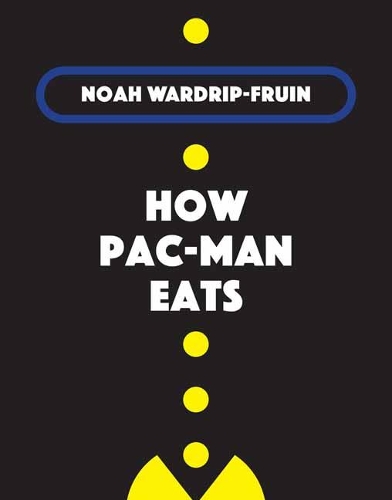
How Pac-Man Eats
(Hardback)
Publishing Details
How Pac-Man Eats
By (Author) Noah Wardrip-Fruin
MIT Press Ltd
MIT Press
16th March 2021
United States
Classifications
General
Non Fiction
Media studies
Games development and programming
794.8
Physical Properties
Hardback
368
Width 178mm, Height 229mm
Description
How the tools and concepts for making games are connected to what games can and do mean; with examples ranging from Papers, Please to Dys4ia In How Pac-Man Eats, Noah Wardrip-Fruin considers two questions- What are the fundamental ways that games work And how can games be about something Wardrip-Fruin argues that the two issues are related. Bridging formalist and culturally engaged approaches, he shows how the tools and concepts for making games are connected to what games can and do mean. Wardrip-Fruin proposes that games work at a fundamental level on which their mechanics depend- operational logics. Games are about things because they use play to address topics; they do this through playable models (of which operational logics are the primary building blocks)- larger structures used to represent what happens in a game world that relate meaningfully to a theme. Game creators can expand the expressiveness of games, Wardrip-Fruin explains, by expanding an operational logic. Pac-Man can eat, for example, because a game designer expanded the meaning of collision from hitting things to consuming them. Wardrip-Fruin describes strategies game creators use to expand what can be said through games, with examples drawn from indie games, art games, and research games that address themes ranging from border policy to gender transition. These include Papers, Please, which illustrates expansive uses of pattern matching; Prom Week, for which the game's developers created a model of social volition to enable richer relationships between characters; and Dys4ia, which demonstrates a design approach that supports game metaphors of high complexity.
Reviews
"This is the heart of this book - a new abstraction, a new tool for discussing something that we've always felt was there, but didn't have a good way to identify. This tool lets us broaden our conversations as we discuss game design: we can talk about mechanics and systems not just in terms of what they do, but also what they will mean to the player.
- Robert Zubek, author of Elements of Game Design, Gamasutra
Wardrip-Fruin's use of logics and models works impressively well at offering readings of what his chosen games are about in ways that a focus on story, mechanics, or rules alone cannot.
-Rainforest Scully-Blaker, Critical Studies in Media Communication
The creative form of the video game has entered a phase of development that is both fraught and promising, attracting notably intelligent designers and scholars. How Pac-Man Eats should figure prominently in the way these makers take on a catastrophic world.
-Stuart Moulthrop, Electronic Book Review
Author Bio
Noah Wardrip-Fruin is Professor of Computational Media at the University of California, Santa Cruz, where he codirects the Expressive Intelligent Studio. He is the author of Expressive Processing- Digital Fictions, Computer Games, and Software Studies (MIT Press).
